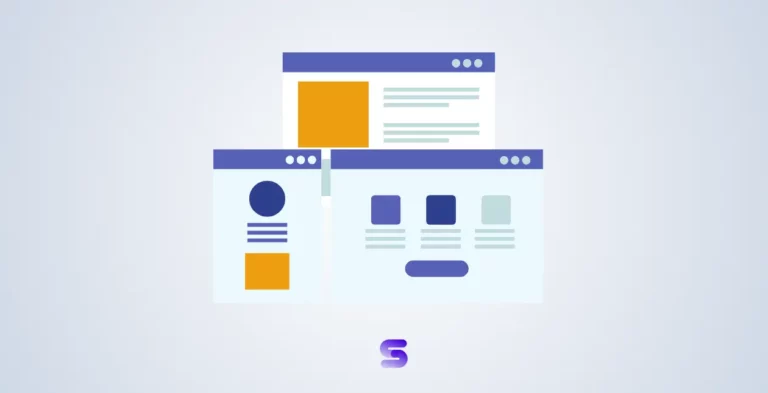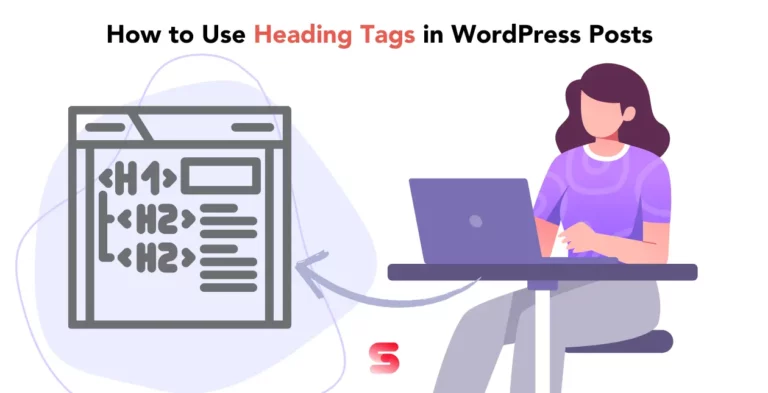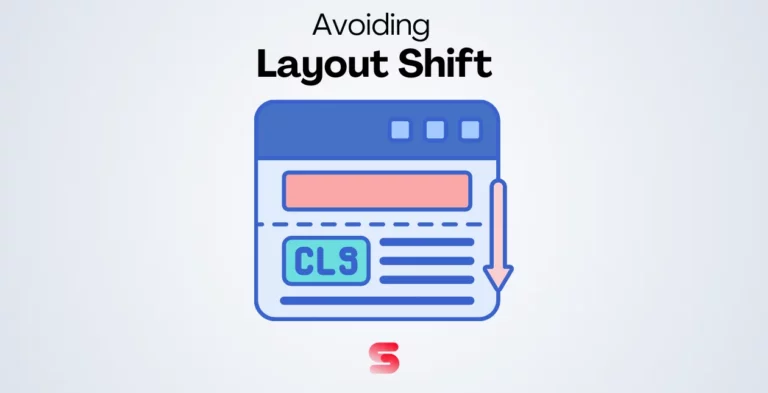Starting a blog might seem overwhelming at first—but it doesn’t have to be. Over 600 million blogs exist today, and millions of people are turning their passions into powerful online platforms. So, what’s stopping you?
Maybe it’s the fear of the unknown—figuring out the tech, finding your voice, or worrying no one will read your posts. But here’s the good news: every successful blogger started right where you are now—with zero traffic and lots of questions.
This guide is here to help you cut through the confusion. Instead of dumping a pile of jargon on you, it walks you through the process step-by-step—choosing the right domain platform, hosting, CMS and page builder for designing your site, writing content people care about, and even growing an audience that keeps coming back.
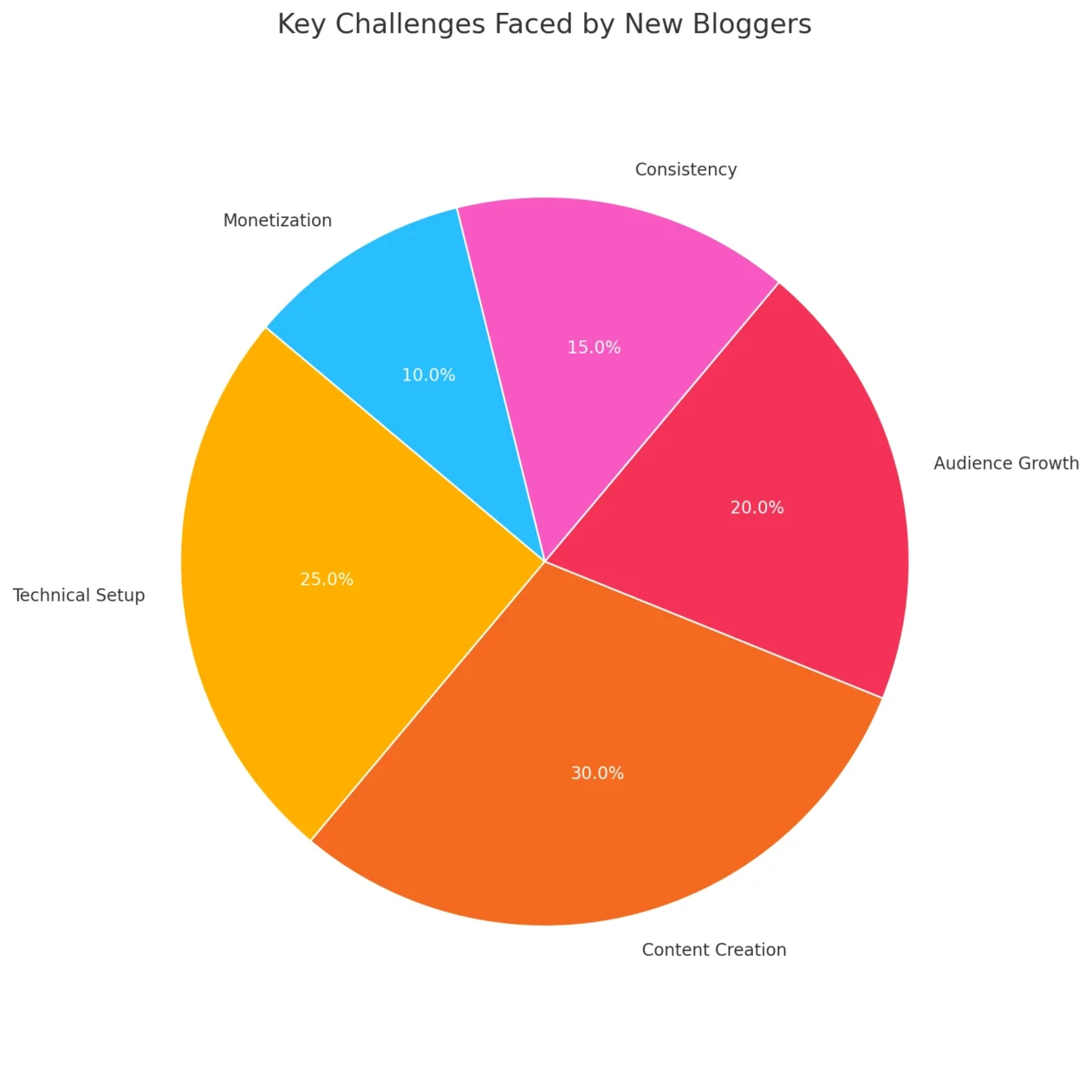
You don’t need to be a tech wizard or a professional writer to start a blog. What you do need is clarity, consistency, and the right direction—and that’s exactly what this guide offers. Whether you want to share ideas, build a personal brand, or turn blogging into a business, you’re in the right place.
Let’s break it all down and turn your blogging dreams into something real.
Understanding the Basics of Blogging

Blogging is basically sharing your thoughts, ideas, and expertise with the world. It’s your space to express yourself, drop some knowledge, and connect with like-minded people. Whether you’re into travel, food, tech, or even figuring out where all your money disappears every month, there’s a blog for that!
With the internet buzzing more than ever, blogging plays a big role in shaping online conversations. It gives everyone a chance to be heard—whether you’re here to inform, entertain, or inspire. So, if you want to make an impact (or just rant about your favorite coffee shop), knowing the blogging basics will take you a long way!
Defining a Blog and Its Purpose

A blog, which is short for “weblog,” is an online journal or information site that gets updated regularly. It usually has posts listed from the newest to the oldest. Blogs can be personal, professional, or focused on a specific topic. They cater to many interests and audiences.
The great thing about starting your blog is that you have total control. You decide what the content looks like, how your site is designed, and who you want to connect with. A good blog can share your passions, create a community, establish your expertise, and even help you earn money.
As you begin your blogging journey, think about your goals and what you want your blog to achieve. A clear purpose will help you create your content and keep you focused on what you want to do.
The Evolution of Blogging and Its Impact on Digital Media

Blogging has come a long way! What started as simple online diaries has turned into a major way to share ideas, influence opinions, and build communities. These days, blogs cover every topic imaginable—fashion, tech, finance, you name it. People trust bloggers for advice, insights, and inspiration.
With social media and digital marketing in the mix, blogs aren’t just about writing anymore—they help shape online conversations and keep people engaged. Businesses use them to connect with customers, build trust, and boost sales, while individuals blog to share their creativity, knowledge, and passions with the world.
Blogging has completely changed how we consume and share information online. And with technology always evolving, it’s safe to say blogging isn’t going anywhere anytime soon!
Blogging Platforms: WordPress and Alternatives
🎯 Choosing the Right Platform Matters – The platform you pick can impact your blog’s success, so it’s worth taking the time to choose wisely.
🌍 WordPress is a Popular Choice – It’s user-friendly, highly customizable, and packed with plugins, making it great for beginners and pros alike.
🛠️ Other Platforms Exist Too – Some offer drag-and-drop editors, built-in social media tools, or unique features that may suit your needs better.
🔍 Think Long-Term – Consider your blog’s future goals and weigh the pros and cons before committing to a platform.
🚀 Your First Big Step – Picking the right blogging platform sets the foundation for everything ahead, so take your time and choose the one that fits you best!
With the right platform, you’ll be well on your way to creating a blog that’s both fun to run and great for your audience! 🎉
The Preliminary Steps Before Launching Your Blog
Before you hit “publish,” a little planning goes a long way! Think of it like painting—you wouldn’t just slap colors on a canvas without a game plan (unless you’re going for abstract chaos).
To set your blog up for success, focus on three things: pick a topic you actually enjoy, understand who you’re writing for, and gather the right tools to make life easier. Nail these steps, and blogging won’t just be fun—it’ll be something you actually look forward to!
Identifying Your Passion and Niche
Starting a new blog is exciting, and it’s easy to want to write about everything. However, narrowing your focus to a specific niche is the key to building a loyal audience and showcasing your expertise.
Your niche should be something you’re truly passionate about—whether it’s testing out new recipes, exploring hidden travel spots, or anything else that excites you. When you write about what you love, it keeps you motivated and makes your content more engaging.
By focusing on a clear topic, you’ll attract the right readers—people who are looking for exactly what you have to share. And when your passion shines through in your writing, it naturally draws them back for more!
Analyzing the Market and Your Potential Audience
Finding your niche is just the beginning—next comes understanding your audience and the market. A little research goes a long way in helping you create content that truly connects with your readers. Here’s what you need to focus on:
- 🔍 Analyze the Market – Research competitors, track trends, and look for gaps where you can stand out.
- 🎯 Know Your Audience – Identify who your ideal readers are, what they like, and the challenges they face.
- 📊 Study Reader Preferences – Understand what type of content they enjoy and which platforms they use the most.
- ✍️ Tailor Your Content – Use your research to shape your writing style, topics, and marketing approach.
- 🤝 Build Loyalty – Engaging the right audience means turning casual readers into dedicated followers.
With the right strategy, you won’t just attract readers—you’ll create a blog they’ll keep coming back to! 🚀
Essential Equipment and Resources for Starting a Blog
Starting a blog? You don’t need expensive gadgets or a fancy setup—just a few essentials to make life easier (and blogging way more fun).
First, a reliable computer and a solid internet connection are must-haves. Without them, you’ll spend more time fighting with lag than actually writing!
Next up: visuals. People love a good image, so whether you snap your own photos with a decent camera or grab free high-quality pics from stock photo sites, make sure your blog looks great.
And don’t forget design! A clean, easy-to-navigate blog keeps readers around. No design skills? No problem! There are plenty of templates and tools to help you create a sleek, professional-looking site without breaking a sweat.
With the right setup, blogging becomes less of a hassle and more of an exciting creative adventure!
Setting Up Your WordPress Blog: A Beginner’s Guide
Let’s take a look at how to set up your blog using WordPress. It might seem hard at first, but we will help you every step of the way.
Setting up your WordPress blog is pretty simple. There are four main steps:
- Choosing a domain name
- Selecting a hosting plan
- Installing WordPress
- Configuring your blog’s settings
With some patience and these easy instructions, you can get your blog up and running quickly.
Step 1: Choosing a Domain Name
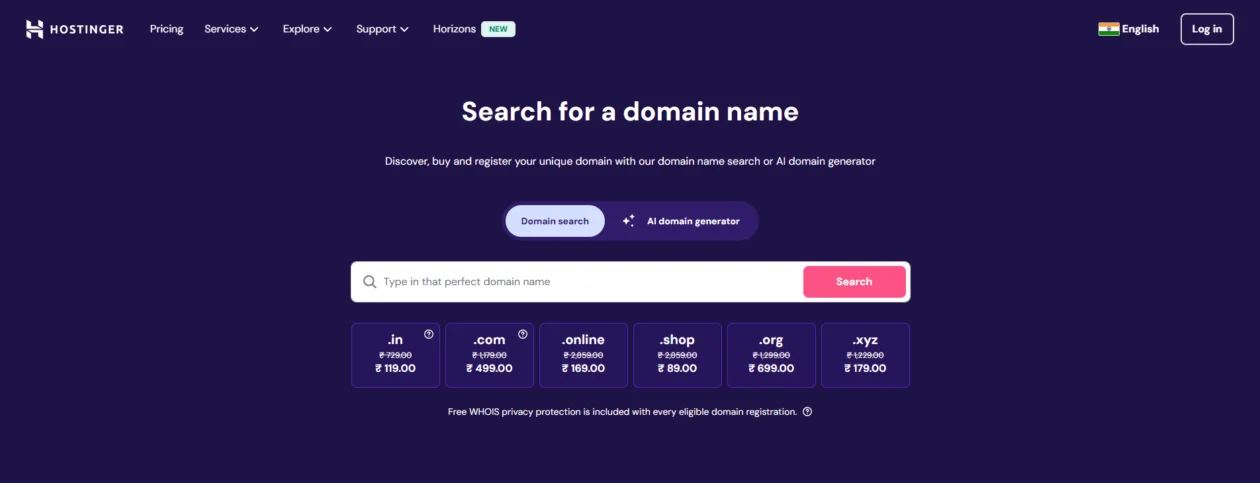
Your domain name is your blog’s home address on the internet—like www.yourblogname.com. It’s how people find you, so choosing the right one is important!
Keep it short, simple, and easy to spell—you want something catchy that sticks in people’s minds. Avoid hyphens and numbers (unless you enjoy explaining your URL every time someone asks).
Before you get too attached to a name, check if it’s available. Most domain registrars have search tools to help. Once you find the perfect one, grab it fast—before someone else does!
You can buy your domain from Hostinger—one of the best websites for domain registration and hosting services. It offers affordable prices, a smooth setup, and great customer support to make the process easy for you!
Step 2: Selecting a Hosting Service
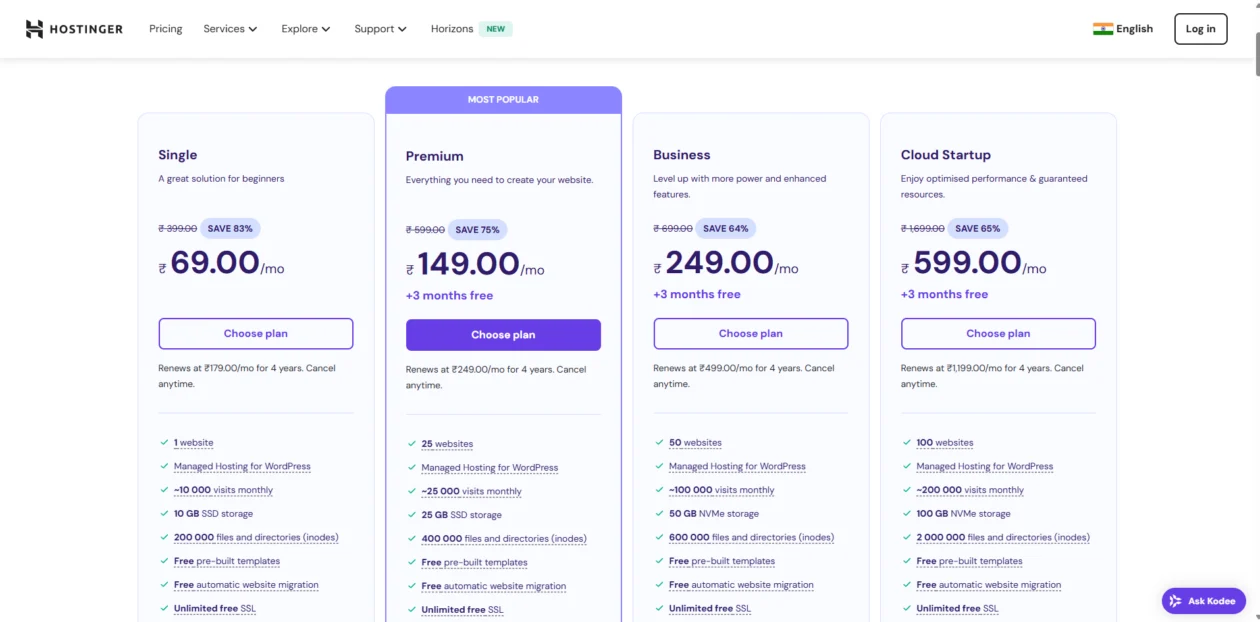
Web hosting is like renting a home for your blog—it stores all your content, images, and data so visitors can access it anytime. A reliable hosting provider keeps your blog fast, secure, and always online (because nobody likes a website that’s constantly “down for maintenance”).
Hostinger is a great choice if you want affordable and high-quality hosting. It is one of the cheapest wordpress hostings. It offers excellent uptime, fast loading speeds, and strong security to keep your blog running smoothly. Plus, with 24/7 customer support, you’ll always have help when you need it.
When picking a plan, look for factors like storage, bandwidth, and pricing. Hostinger provides flexible plans that fit any budget, so your blog won’t crash the moment it gets popular! You also get one-click WordPress installation and a free domain, making setup easy and hassle-free.
We recommend hostinger because you get multiple services under one interface and the learning curve gets reduced. That is why Hostinger is reliable beginner-friendly option.
Step 3: Installing WordPress
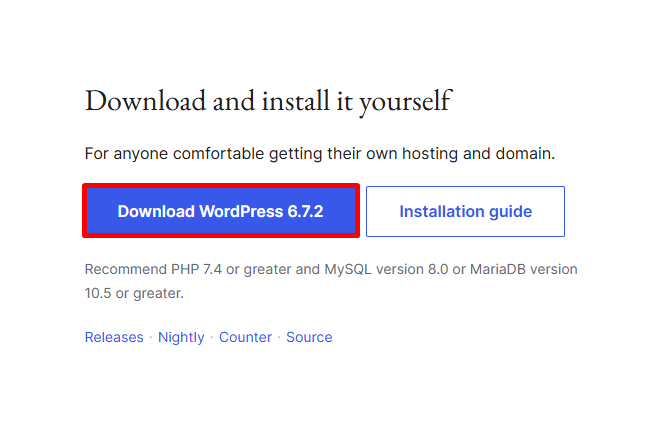
Many hosting providers make setting up WordPress easy—just one click, and boom, your blog is live! No coding, no tech headaches.
Here’s how it works: Log into your hosting account, find the WordPress installation button, and click it. That’s it. The system does all the behind-the-scenes magic for you in minutes.
You’ll just need to set up a username and password for your admin access. This gets you into the WordPress dashboard, your blog’s control center, where you’ll write posts, tweak settings, and customize the design—basically, where all the fun happens.
WordPress makes blogging a breeze. Whether you’re publishing your first post or giving your site a makeover, everything is simple and intuitive. So go ahead, and start clicking!
Step 4: Configuring Your Blog’s Settings

Once you step into your WordPress dashboard, it’s time to make your blog feel like yours. A few quick settings—like your site title, tagline, time zone, language, and permalink structure—help personalize your blog and keep things running smoothly.
Now, let’s talk themes—basically, your blog’s outfit. The theme you choose decides how your site looks and functions, from fonts and colors to page layouts and navigation. A good theme makes a great first impression, so pick one that matches your style and niche.
WordPress offers tons of free and paid themes, so take your time testing a few. And don’t be afraid to customize! Play around with colors, fonts, and layouts to create a blog that’s not just functional but also uniquely you. After all, your blog should stand out—not look like every other one out there!
Designing Your Blog for Maximum Appeal
A good-looking, easy-to-use blog isn’t just for show—it makes a difference! It keeps readers engaged, makes your content easier to digest, and leaves a lasting impression.
In this section, we’ll dive into some key tips to make your blog visually appealing and user-friendly. From choosing the perfect theme to nailing the right design elements, you’ll learn how to create a blog that not only looks great but also keeps readers coming back for more. Let’s get started!
Selecting the Right Theme for Your Blog
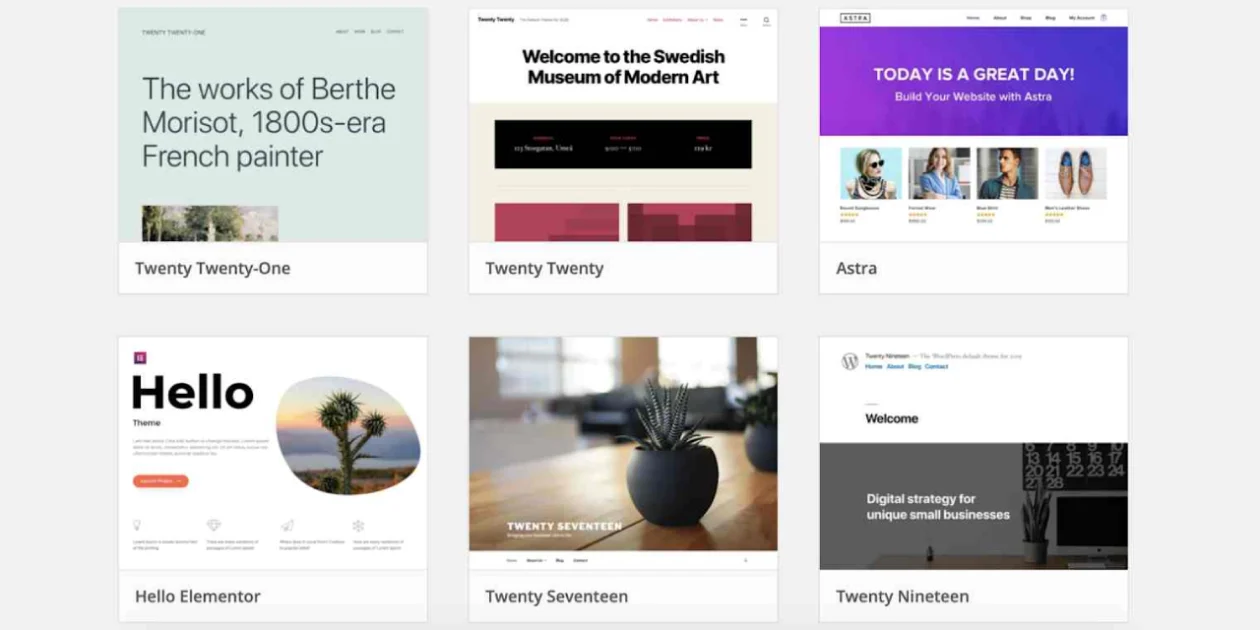
Choosing the blog WordPress theme is essential for your blog’s success. It affects not just the look of your site but also how visitors interact with it. A well-chosen theme enhances readability, improves user experience, and helps with SEO.
- 🏆 Brand Identity – Your theme should reflect your blog’s personality and message.
- 🎨 Visual Appeal – Your theme shapes how your blog looks and feels.
- 🔍 Niche & Audience Fit – Pick a theme that aligns with your blog’s topic and readers.
- 📱 Mobile-Friendly Design – Ensure it works well on all screen sizes.
- ⚙️ Customization Options – Look for easy ways to tweak colors, fonts, and layout.
- 🚀 Fast Loading Speed – A slow theme can hurt user experience and SEO.
- 🔗 SEO-Friendly Structure – Helps your blog rank better in search results.
Customizing the Look and Feel of Your Site

Your WordPress theme is the foundation of your blog’s design. The right theme, combined with a little customization, can help you create a site that truly reflects your personality and brand. And the best part? You don’t need to be a coding expert to make it happen!
- 🎨 Customize Your Look – Change colors, fonts, and layouts to match your style.
- 🏷️ Show Off Your Brand – A custom design helps make your blog stand out.
- 🔧 No Coding Needed – Most themes offer easy, drag-and-drop customization.
- 🌍 Use a Custom Domain – A branded domain name makes your blog look pro.
- 🛠️ Enhance with Plugins & Widgets – Add extra features and functionality.
- 🔄 Make It Uniquely Yours – With a little creativity, you can turn any theme into something special!
Important Design Elements to Consider

A well-designed blog isn’t just about looking good—it’s about making sure visitors have a smooth, enjoyable experience. When your blog is easy to navigate and pleasant to read, people will stick around longer and keep coming back.
- 🧭 Easy Navigation – A clear, well-structured menu helps visitors find what they need.
- 🔖 Simple Menu Labels – Keep menu items short and straightforward for quick access.
- 🔤 Readable Fonts – Choose fonts that are easy on the eyes, with a good size and style.
- 🎨 Good Color Contrast – Make sure the text is easy to read against the background.
- 📏 Proper Spacing – Avoid clutter; give content room to breathe.
- 🚫 No Messy Layouts – A clean, simple design keeps readers focused on your content.
Creating Engaging and Visually Appealing Content

A blog without visuals is like a pizza without toppings—plain and uninviting! Great visuals grab attention, break up text, and make your content more engaging. Plus, they can help you reach more readers when shared on social media.
- 🎨 Make Content Easier to Digest – Break up long text with relevant visuals.
- 🖼️ Use High-Quality Visuals – Images, videos, and graphics make your blog more appealing.
- 🎯 Purpose-Driven Images – Every visual should support your content, not just fill space.
- 📸 Invest in Good Photos – Use a quality camera, stock photos, or collaborate with creators.
- 📢 Boost Social Shares – Eye-catching visuals increase engagement and reach.
Crafting Your First Content Pieces
It’s time to make your blog exciting by writing your first attention-grabbing posts. This step is about knowing what your audience needs. You’ll need to come up with fresh ideas and learn how to write blog posts that connect with your readers.
Focus on making quality content instead of just churning out a lot of posts. Each blog post should give value to your audience, whether it is helpful, fun, or motivating. Be authentic. Let your personality show in your writing. This will help you connect with your readers better.
Understanding Your Audience’s Needs

Before writing, start with keyword research and competitor analysis to find topics that resonate with your audience. Use SEO tools like Google Keyword Planner, Semrush, and Ahrefs to discover what people are searching for.
Once you have the right keywords, analyze your competitors—see what’s working for them and how you can do it even better. Then, create a topic that answers your audience’s questions and offers real value.
Engage with your readers through surveys, Q&As, or social media to understand their preferences. Keep delivering useful content, and they’ll keep coming back!
Generating Ideas for Your First Posts
Coming up with fresh blog ideas keeps your audience engaged and your blog thriving. Don’t stress about perfection—start with what you know and explore from there.
Find inspiration in your interests, life experiences, news, or audience questions. Make a list of topics and outline key points.
Mix up your content with lists, how-to guides, interviews, or personal stories to keep things interesting. The goal? Create valuable, entertaining, or inspiring content that keeps readers coming back!
The Anatomy of a Great Blog Post
A great blog post isn’t just words—it’s engaging, informative, and well-structured.
Start with a catchy headline that sparks curiosity and includes relevant keywords for SEO. Keep your content easy to read with headings, subheadings, and visuals.
Write in a friendly, relatable tone, and use personal stories or examples to connect with readers. A well-organized post keeps readers hooked and leaves a lasting impression!
SEO Basics for Beginners

SEO helps your blog rank higher in search results, making it easier for people to find your content.
Start with keyword research using tools like Google Keyword Planner to find popular, low-competition terms. Then, create high-quality content that meets user needs and keeps them engaged.
Backlinks from trusted sites boost your credibility, signaling to search engines that your content is valuable and worth ranking higher!
Enhancing Your Blog with Plugins and Tools
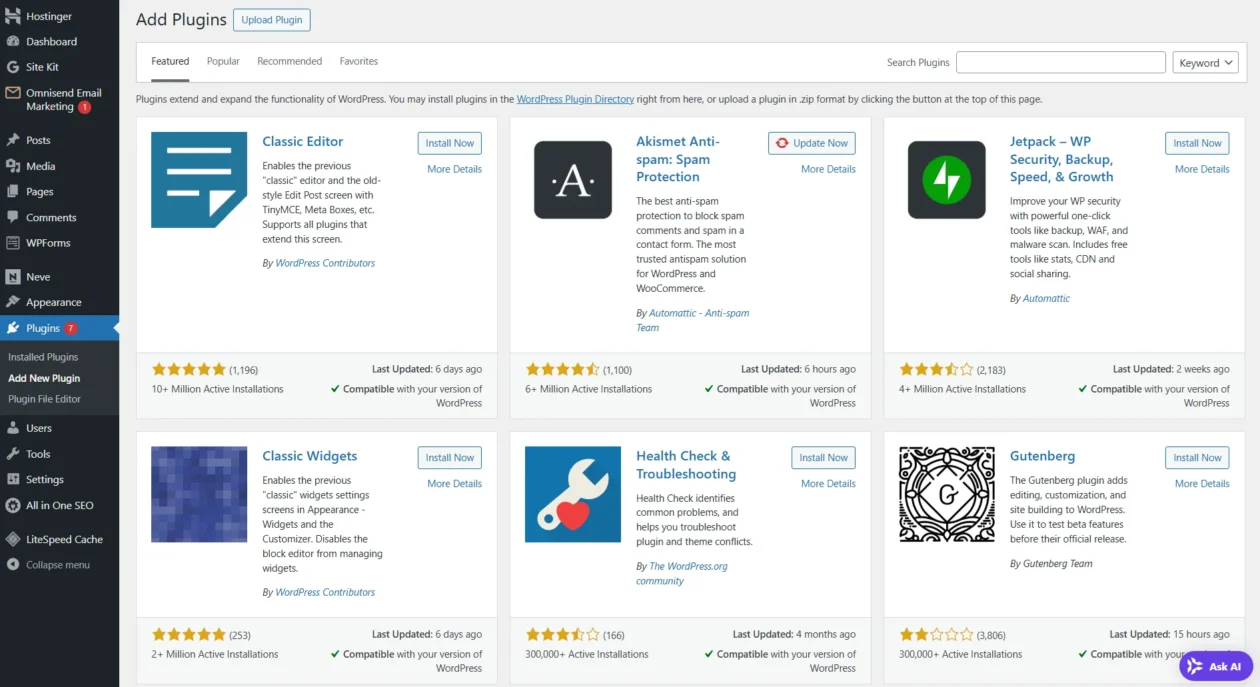
Think of plugins like apps for your WordPress blog. They help add new features, improve security, and make managing and growing your website easier. WordPress has a large directory of plugins that offer solutions for nearly every blogging need.
This includes everything from improving your site for search engines to sharing on social media.
In this section, we will look at important plugins, tools for creating content, and widgets to enhance your blog. This way, you can give your readers a smooth experience.
Must-Have WordPress Plugins for Every Blogger
WordPress plugins make your blog easier to use and improve its performance. There are some must-have plugins for WordPress that offer solid foundation to any website.
- SEO plugins like Yoast SEO and Rank Math help optimize your posts for better search rankings.
- Security plugins like Wordfence and Sucuri keep your blog safe from threats.
- Caching plugins like WP Rocket, Perfmatters, W3 Total Cache, Autoptimize speed up your site, improving user experience and SEO.
- Page Builders like Elementor, Bricks, Divi, Oxygen, and Beaver.
- Addons like Crocoblock, Dynamic.ooo, Plus Addons.
With the right plugins, your blog stays fast, secure, and optimized!
Tools for Content Creation and Management
Blogging moves fast, and staying organized is key. You don’t want to be scrambling for ideas at the last minute! That’s where productivity tools and an editorial calendar come in—they keep your content flowing smoothly without the stress.
Grammarly is like a personal editor that catches grammar mistakes and awkward sentences before your readers do. It polishes your writing, so you sound like a pro (or at least like you proofread).
Canva makes design easy—even if you have zero graphic skills. Create eye-catching blog images and social media graphics without breaking a sweat. Because let’s be honest, visuals matter.
An editorial calendar (digital or old-school paper) keeps track of your blog posts, deadlines, and ideas. It helps you plan and stay consistent—so you’re not panicking the night before a post is due!
With the right tools, blogging becomes way easier—and a lot more fun!
Improving User Experience with Widgets
Widgets in WordPress are like handy little tools that let you customize your blog without any coding. They help you add cool features to your sidebar, footer, or other widget-friendly areas, making your blog more user-friendly and engaging.
- 🔗 Social Media Widgets – Let visitors share your content easily, boosting your reach and bringing more traffic.
- 📝 Recent Posts Widget – Show your latest blog posts to keep readers engaged and exploring.
- ⭐ Testimonial Widget – Display feedback from happy readers to build trust and credibility.
- 📲 Social Media Feeds – Showcase your Instagram, Twitter, or Facebook updates right on your blog.
- 📩 Email Signup Forms – Grow your email list by encouraging visitors to subscribe.
Using widgets wisely can make your blog more interactive and user-friendly—without any tech headaches!
Building Your Online Presence and Authority
Building your blog’s presence online is more than just having a website. You need to connect with your community. Use social media platforms to engage with others. Work together with other bloggers and network in your niche.
When you share good content, join important conversations, and make real connections, you will become a trusted voice in your area. This can help you attract a loyal audience.
Engaging with Your Community Through Comments
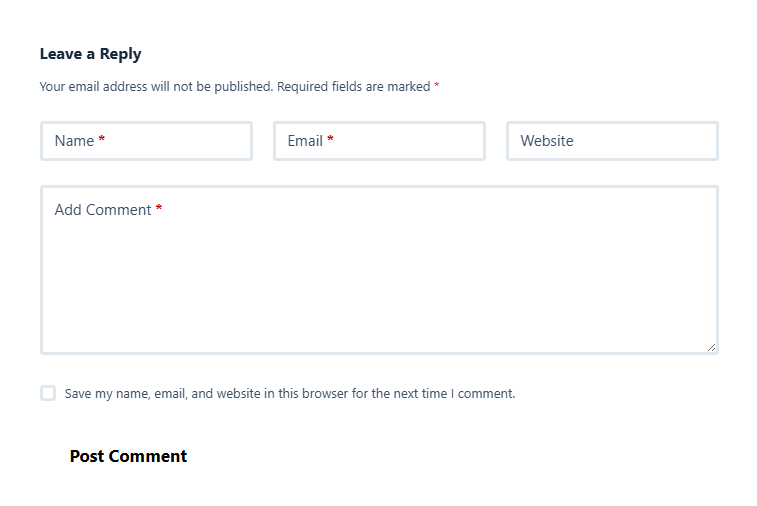
Building a strong blog community makes your readers feel like they belong. This encourages them to interact and stay loyal. One good way to boost this engagement is by joining the conversation in the comments section of your blog posts.
Respond carefully to comments, answer questions, and recognize both positive and negative feedback. You can also ask questions in your replies. This will prompt readers to share their thoughts and experiences.
By regularly engaging with your blog community, you show that you care about their input. This creates a friendly space for open talks and common interests. This kind of interaction not only builds a community but also gives important insights into what your readers think, like, and face.
Leveraging Social Media to Expand Your Reach
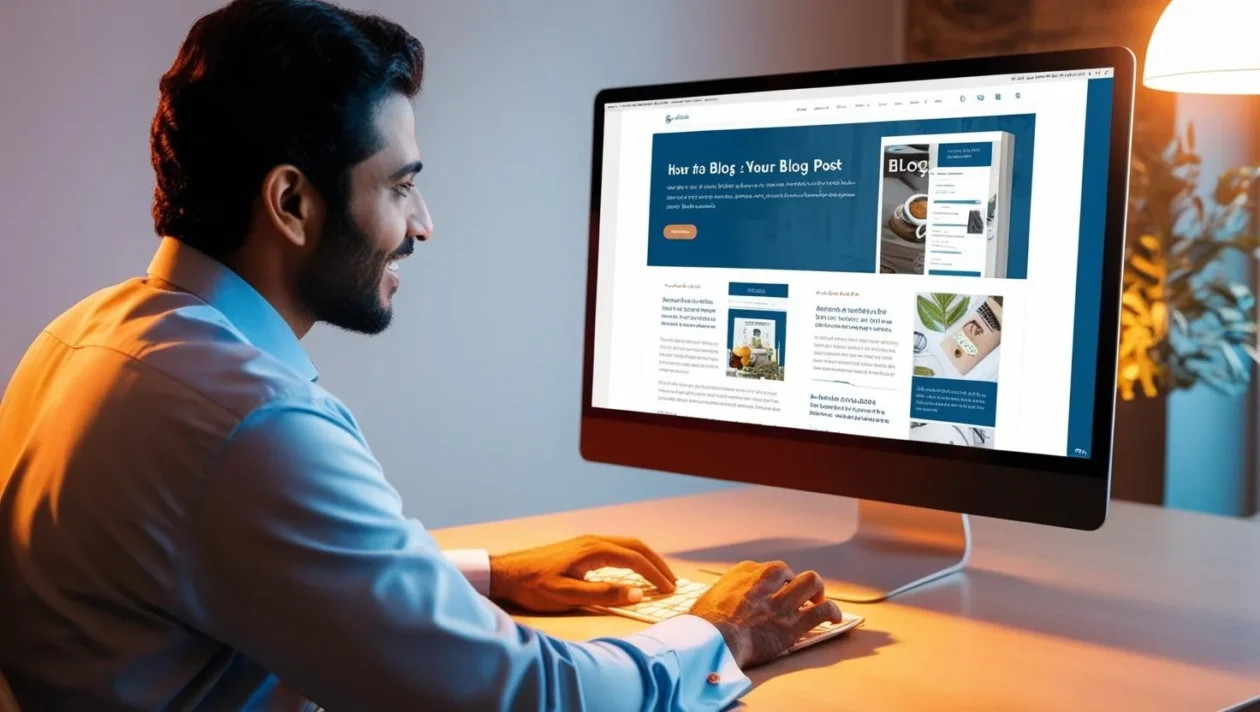
Social media platforms are great tools to help your blog reach more people. Find out which platforms your target audience uses and change your content strategy to match what they like.
Post short snippets of your blog articles along with eye-catching images and links to the full posts on your social media accounts. Ask questions, create polls, or run contests that relate to your niche to get people talking.
Be active with your followers, reply to comments, and join in important conversations in your niche. When you build good relationships on social media, you create a strong brand presence and reach a wider audience for your blog.
Guest Posting on Other Blogs
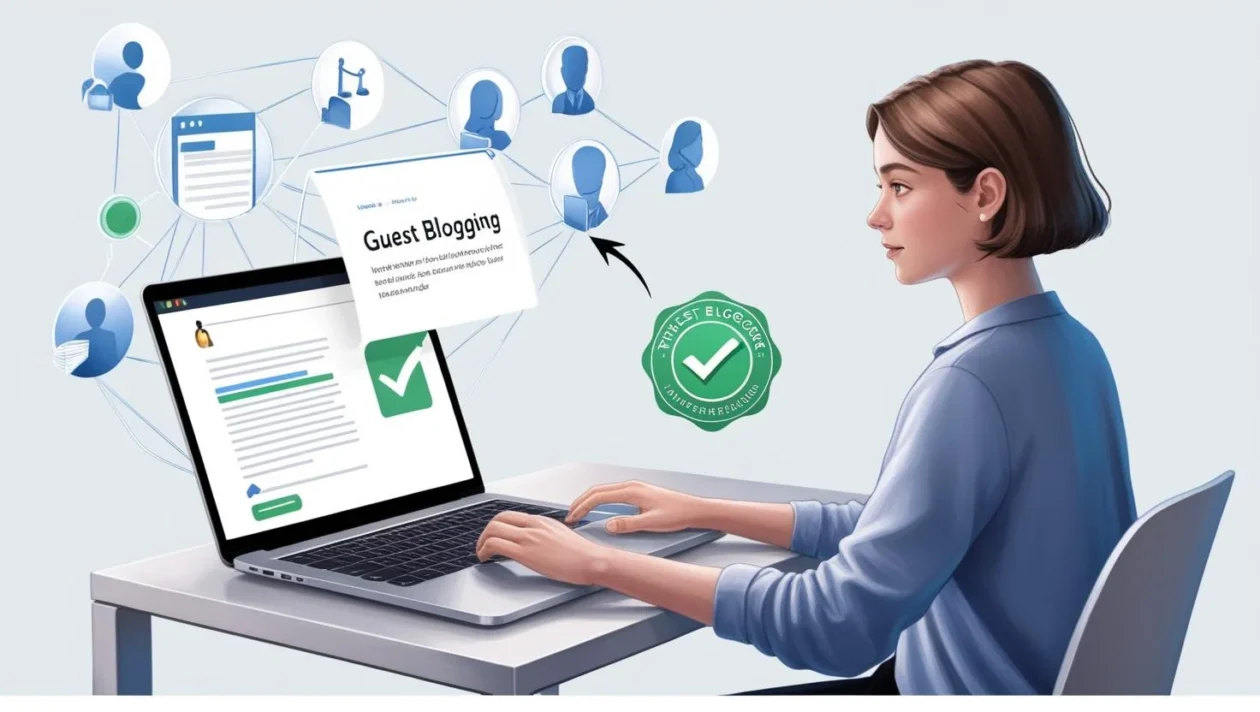
Guest posting is when you write and share articles on other blogs that focus on the same topics as yours. This is a great way to reach more people, bring traffic back to your website, and show that you are an expert in your field.
When you do guest posting the right way, you introduce your blog to a new group of readers. This can help build your brand and create links to your website, which tells search engines that your content matters. When looking for blogs to write for, make sure their audience is similar to your target readers and that their site is well-respected.
You should create quality content that is interesting and helpful for your readers. This shows your knowledge and helps position you as a leader in your niche. A strong guest post can increase your blog’s visibility and attract a wider audience.
The Importance of Networking in Blogging

Building strong connections with other bloggers is important for long-term growth and success in blogging. You should engage with them on social media. Leave thoughtful comments on their articles. Attend blogging conferences or webinars to meet more people.
You can work together on projects, share each other’s content, or invite guest posts. A supportive blogging network gives you great learning chances, creates a community, and opens up new opportunities.
Keep in mind that networking is not just about what you can get. Show genuine interest in others, offer your support, and help the community. These real connections benefit everyone and help create a strong and supportive blogging environment.
Strategies for Growing Your Blog’s Audience
Growing your blog’s audience needs a smart plan. This plan should include search engine optimization, email marketing, promoting your content, and getting involved in online communities.
When you use a mix of these methods, you can reach more people, bring in new readers, and build a loyal group of followers.
Effective SEO Techniques for Bloggers
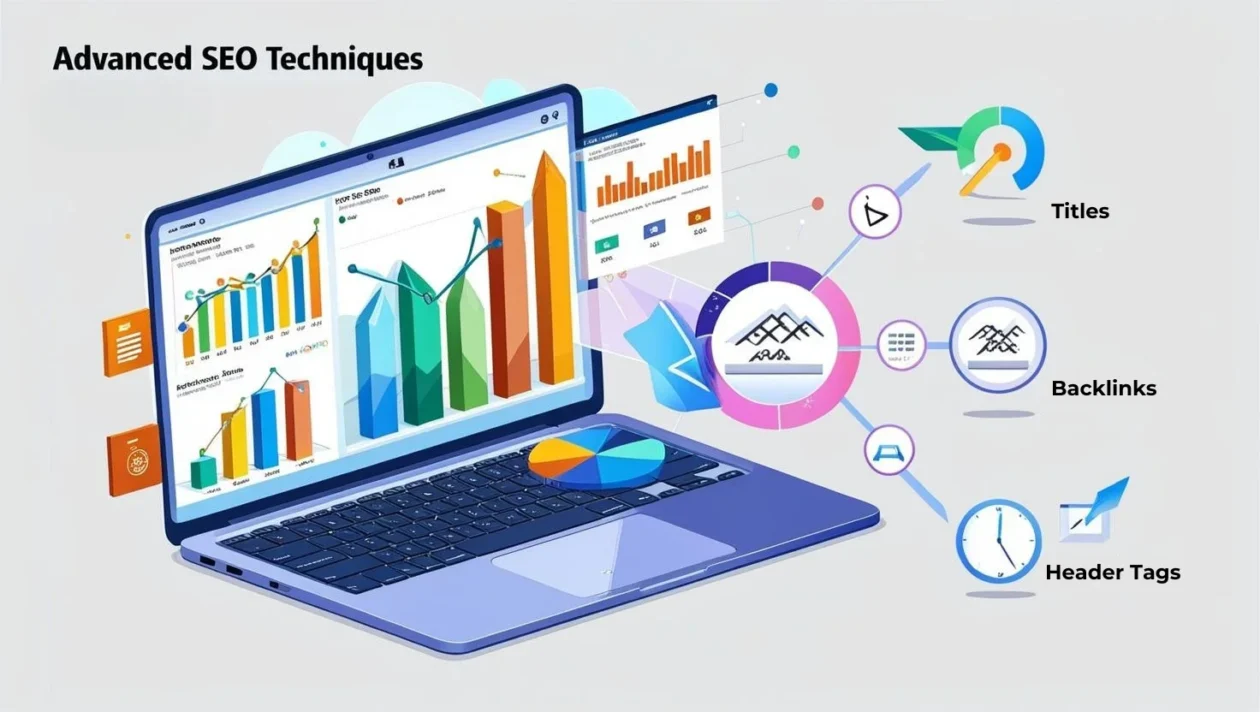
We talked about the basics of SEO before. Now it’s important to learn advanced search engine optimization techniques to help bring more organic traffic to your blog. SEO is a constant process. It takes research, analysis, and effort to improve.
Use tools like Google Analytics to check how your blog is doing. You can find out which posts do the best and learn about your audience’s behaviors. Keep an eye on your keyword rankings. Look at where your website traffic comes from, and change your content strategy based on these insights.
Follow On-page SEO best practices. This means optimizing your blog post titles, meta descriptions, header tags, and image alt text with the right keywords. Build good backlinks by guest posting on reputable websites in your area, joining industry forums, or getting mentioned in online publications.
Utilizing Email Marketing to Retain Readers

Building an email list is important for keeping your readers, building relationships, and bringing traffic back to your blog. Email marketing helps you send valuable content, updates, and promotions straight to your subscribers’ inboxes.
Offer a lead magnet, like a free ebook, checklist, or exclusive content upgrade to get their email addresses. Encourage people to sign up through well-placed opt-in forms on your blog, such as pop-up forms, sidebar widgets, or landing pages.
You can also segment your email list by what your subscribers like or how they engage. This way, you can personalize your messages and give them relevant content. This method leads to better engagement and stronger ties with your audience.
Creative Ways to Promote Your Content

Once you have created interesting content, don’t just leave it on your blog. Promote your posts smartly to reach more people and bring traffic to your website.
Use social media to share short clips, quotes, or images from your blog posts. Add a strong call to action, asking people to read the full article. Connect with your followers, join conversations, and reply to comments.
Team up with other bloggers or influencers in your area. You can promote each other’s content or do joint giveaways to grow your audience. You can also try paid ads, like social media ads or Google AdWords, to attract a wider audience and get targeted traffic to your blog.
Participating in Online Forums and Communities
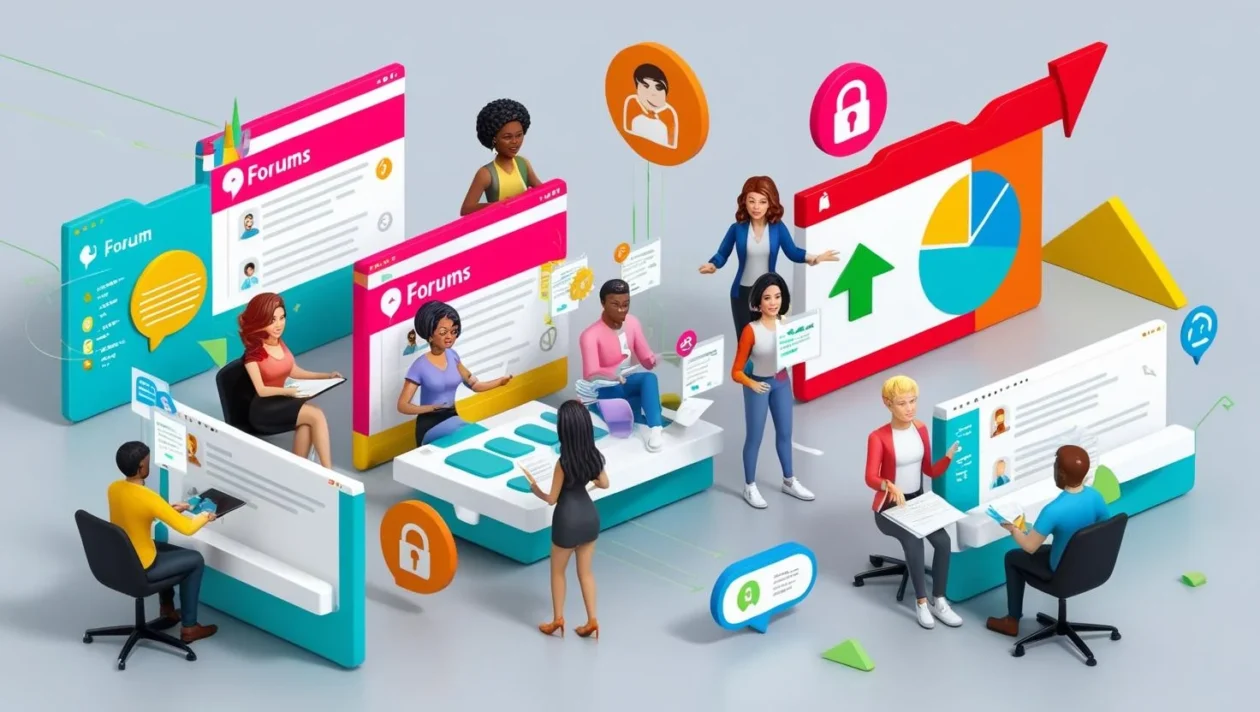
Online forums and communities are great places to connect with your target audience. They help you show your knowledge and bring traffic to your blog. Look for forums or communities where your ideal readers spend time.
Join in on the discussions. Answer questions, share useful insights, and make a name for yourself as a leader in your field. You can share links to your blog posts if it fits, but be careful not to come off as spammy or too promotional. This behavior can chase away potential readers.
By truly helping out in these online spaces, you will form relationships and gain trust. This can lead to more visitors coming to your blog. Always aim to provide real value and create honest connections.
Monetizing Your Blog: What You Need to Know
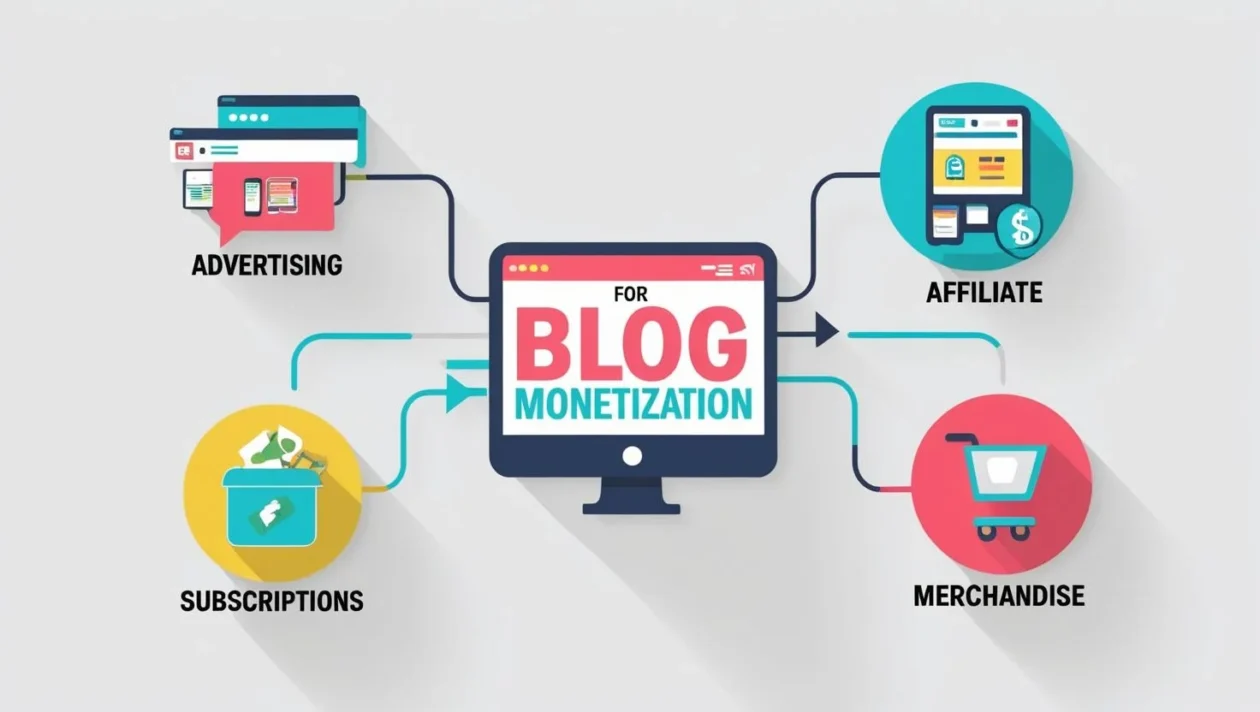
Monetizing your blog is like finding the ultimate goal in blogging. It lets you change your passion into a way to earn money. While making money from your blog takes time, work, and a plan, you can definitely succeed.
You can explore options like affiliate marketing, display ads, or selling your own products and services. We will help you learn how to make money from your blog in a smart and honest way.
Exploring Different Revenue Streams for Bloggers
Once you have a good audience and your blog is seen as useful, you can start using different ways to make money from your content and earn passive income.
Affiliate marketing means you share other companies’ products or services on your blog. You can earn a commission for any sales that happen through your special affiliate links. You can also use display advertising, like Google AdSense. This lets you show ads on your blog and earn money based on how many times people see or click on the ads.
You can also think about selling your own products or services. These could be ebooks, online courses, coaching programs, or physical items that fit your blog’s topic. This way of making money gives you more control over your prices and how much you earn.
Setting Up Affiliate Marketing
Affiliate marketing is a way to earn money by promoting products or services from other businesses on your blog. You work with companies that have affiliate programs that fit your niche and audience.
When you sign up for an affiliate program, you get a special affiliate link or code. You can add this link to your blog posts or website. If someone clicks on your link and makes a purchase, you receive a percentage of the sale.
Being clear and honest is very important in affiliate marketing. You should let your readers know about your affiliate relationships. Only recommend products or services that you truly trust and think will interest your audience. Aim to provide value and build trust. This way, your suggestions will help both your readers and the brands you work with.
The Basics of Display Advertising
Display advertising means putting visual ads, like banner ads, sidebar ads, or pop-up ads, on your blog. A popular platform for bloggers is Google AdSense. It helps connect you with advertisers who want to reach your audience.
After you sign up for Google AdSense and get approval for your blog, you will get a code to put on your site. Google will then show ads that fit your content and target audience. This way, you can earn money when people see or click the ads.
It’s important to find a good mix between making money and keeping a good user experience. If you have too many ads, they can make your blog look messy. This can make it hard for readers to enjoy your posts and could drive them away. Try out different ad types and positions to see what works best. Make sure the ads match your content and do not take attention away from it.
Creating and Selling Digital or Physical Products
Creating and selling your digital or physical products can help you make money directly. This gives you more control over the prices and how much you can earn. Digital products like ebooks, online courses, templates, and printables are easy to share and can grow quickly.
For physical products, think about items related to your niche. These could be merchandise, handmade goods, or special subscription boxes. They can attract loyal customers who want unique and exclusive products.
To sell your products well, you need to understand what your audience wants. Make sure your products offer value or help solve their problems. Spend time on product development, marketing, and customer service to create a good buying experience.
Keeping Your Blog Fresh and Relevant
In today’s fast-changing digital world, it’s important to keep your blog fresh and relevant. This helps you keep your current audience engaged, attract new readers, and stay ahead. Updating your content often, following new trends, and encouraging interaction are all essential for a lively blog.
This section will share tips for planning your content, staying updated on industry trends, and creating an online space that keeps your readers interested.
Planning Your Content Calendar
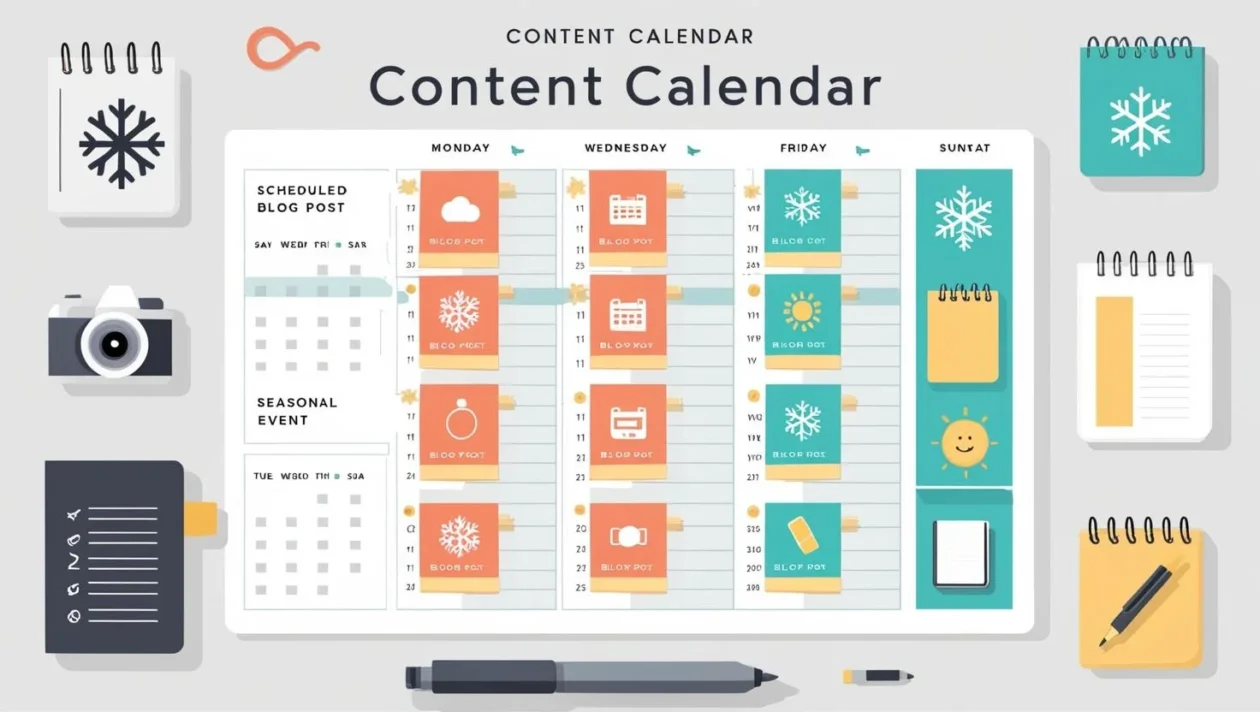
Consistency is important in blogging. Creating a good content calendar helps you stay organized. It ensures you have a regular flow of new blog posts. This way, your blog will not feel old or stale. Write down your upcoming blog posts, themes, and when you plan to publish them.
Think about seasonal events, holidays, or industry conferences that are important for your niche. Adding these events to your content calendar helps you write relevant and timely posts. You can use tools like Google Trends to find out what keywords or topics are popular right now.
Set aside time for creating, editing, and promoting your content. Plan in advance to make sure you are not rushing. This way, each blog post will be well-researched, interesting, and visually appealing. A good content calendar is the backbone of a successful blog.
Staying Updated with Industry Trends
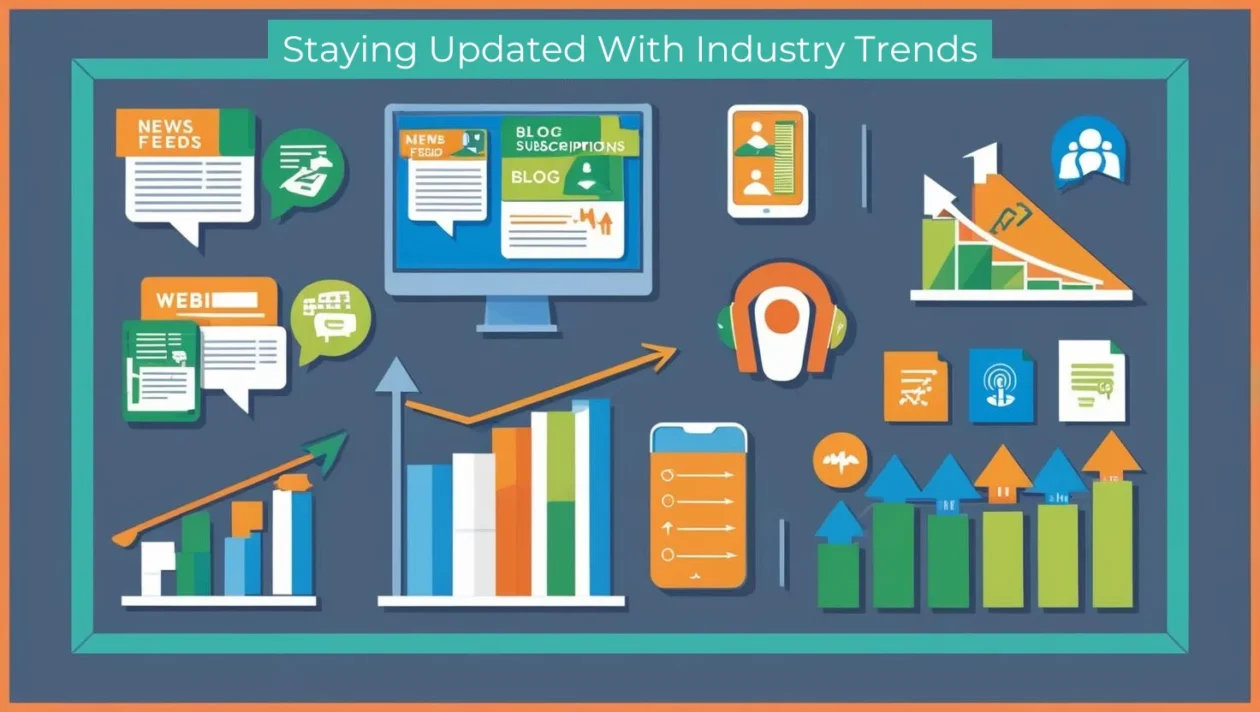
The digital world is always changing. What is important now could be old news soon. It is important to stay updated on industry trends, new technologies, and how your audience behaves. Doing this helps you create fresh content that matters. To stay informed, subscribe to industry blogs, podcasts, or newsletters.
You should also attend webinars and conferences. This helps you learn about the best ways of doing things and what is new in the industry. Regularly analyze the market. This will help you understand what your audience wants, their likes, and their struggles.
By learning and updating your content based on current trends, your blog can become a helpful resource. This approach will help you stay ahead in the fast-changing digital environment.
Regularly Updating and Repurposing Old Posts

Keeping your blog fresh and interesting is very important. This helps keep readers interested and can improve your search engine ranking. Updating and reworking old posts can bring new energy to your content.
It can also attract new readers and boost your SEO work. By revisiting older articles and adding new facts, insights, or a different view, you give value to your audience. This makes them want to return for more.
Also, changing old posts into different formats like infographics, videos, or podcasts helps reach a wider audience and brings more traffic to your blog. Use the idea of recycling your content to get the most out of it and keep it relevant for a long time.
Advanced Blogging Tips for Long-Term Success
📊 Analyze Blog Performance with Analytics – Use Google Analytics to track traffic, audience behavior, and improve content strategy.
🔍 Implement Advanced SEO Strategies – Research keywords, optimize meta tags, and build quality backlinks for better rankings.
🔒 Follow Security Best Practices – Use strong passwords, backups, SSL certificates, and security plugins to protect your blog.
📢 Scale Your Blogging Efforts – Repurpose content into videos, and infographics, and expand to different platforms.
🤝 Collaborate with Influencers & Bloggers – Partner with others for guest posts, cross-promotions, and a wider audience reach.
🛠️ Automate & Manage Time Wisely – Use scheduling tools to stay consistent and avoid burnout.
💡 Stay Creative & Overcome Writer’s Block – Experiment with new content ideas to keep blogging engaging and fresh.
💬 Take Feedback Positively – Learn from negative feedback to improve and grow your blog.
📈 Use Paid Promotions for Faster Growth – Boost your blog’s reach with social media ads and sponsored content.
Overcoming Common Blogging Challenges
📝 Dealing with Writer’s Block – Take breaks, brainstorm ideas, try mind mapping, or seek inspiration from other sources.
⏳ Managing Time Effectively – Use a content calendar, set deadlines, and balance writing, editing, and promotion.
💬 Handling Negative Feedback Constructively – View criticism as an opportunity to improve, respond professionally, and use feedback to grow.
🎨 Keeping Your Blogging Passion & Creativity Alive – Experiment with new content ideas, engage with your niche community and collaborate with others.
🚀 Staying Motivated & Avoiding Burnout – Take care of your well-being, find inspiration in your interests, and maintain a work-life balance.
FAQs
How Much Does It Cost to Start a Blog?
To start a blog, you might spend between $0 and more than $100 each year. Important costs include registering your domain, which costs about $10 to $20. You will need hosting too, which can range from $3 to $10 each month. You might also want to add things like premium themes or plugins, which are optional. It is good to budget for creating content and marketing if you want long-term success.
Can I Start a Blog Without Any Technical Skills?
Yes, you can start a blog even if you don’t have technical skills. You can use easy platforms like WordPress or Blogger. They have simple templates and tools that let you create and customize your blog without needing to know coding. Let your creativity flow and focus on making good content!
How Long Does It Take to Make Money from Blogging?
A blog usually takes about 6 months to a year to start making money. The key elements are creating quality content, attracting an audience, and using good monetization strategies. These factors decide how quickly you can earn from blogging.
How Often Should I Post New Content on My Blog?
Consistency is important when sharing new content on your blog. Try to stick to a regular posting schedule that works for your audience and can last over time. It’s better to prioritize quality than quantity. Focus on giving valuable posts instead of flooding your readers with too much information.
Can Blogging Be a Full-Time Career?
Blogging can become a full-time job if you are dedicated and plan smartly. If you make quality content regularly, connect with your audience, and look into ways to earn money like affiliate marketing and sponsored posts, you can turn your blog into a full-time career.
Conclusion
Starting a blog? Exciting times ahead! But let’s be real—blogging isn’t some overnight success story. It’s more of a slow-cooked meal than instant noodles. Stay consistent, be patient, and keep honing your craft.
Challenges? Oh, you’ll have plenty. But think of them as plot twists in your blogging journey—opportunities to learn and level up. And hey, don’t forget to have fun along the way! Your unique voice has the power to reach and inspire people, so keep sharing what you love.
Here’s to your blogging adventure—may your words flow and your audience grow. Happy blogging!


